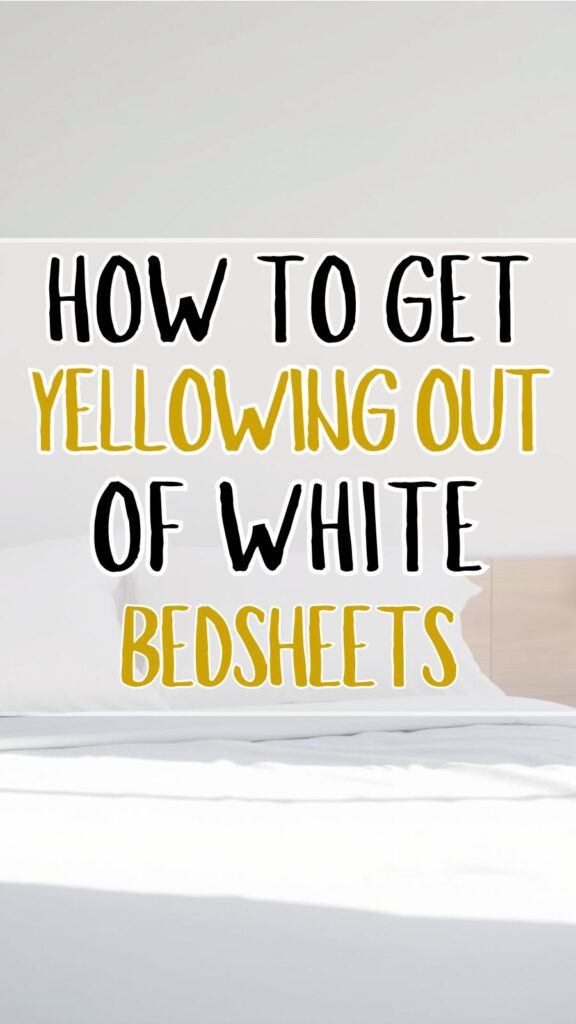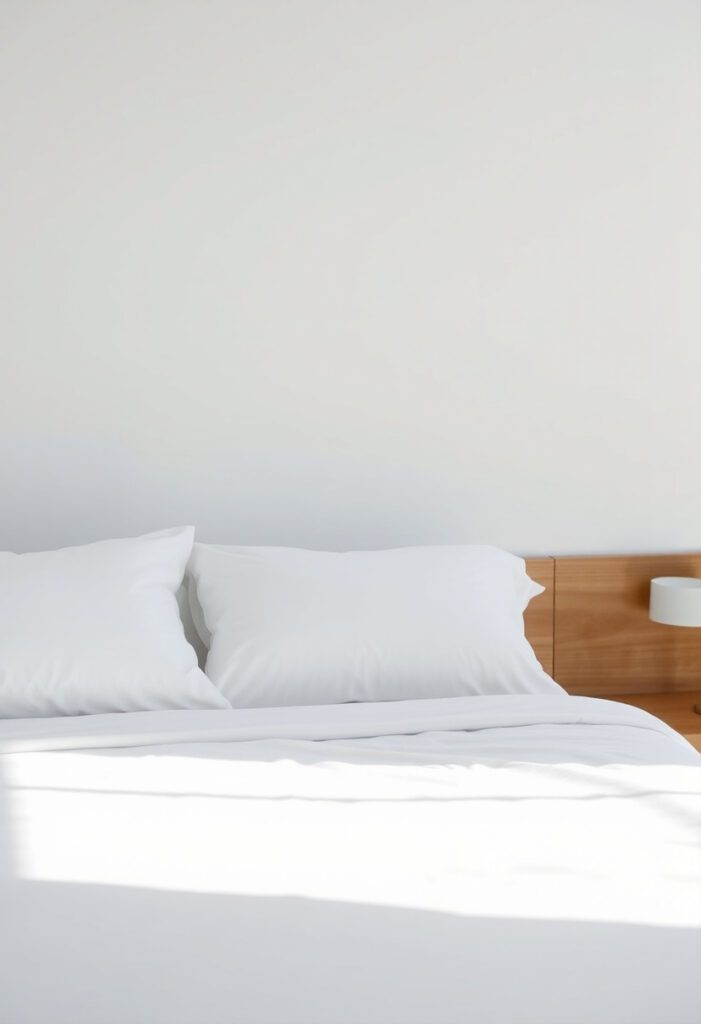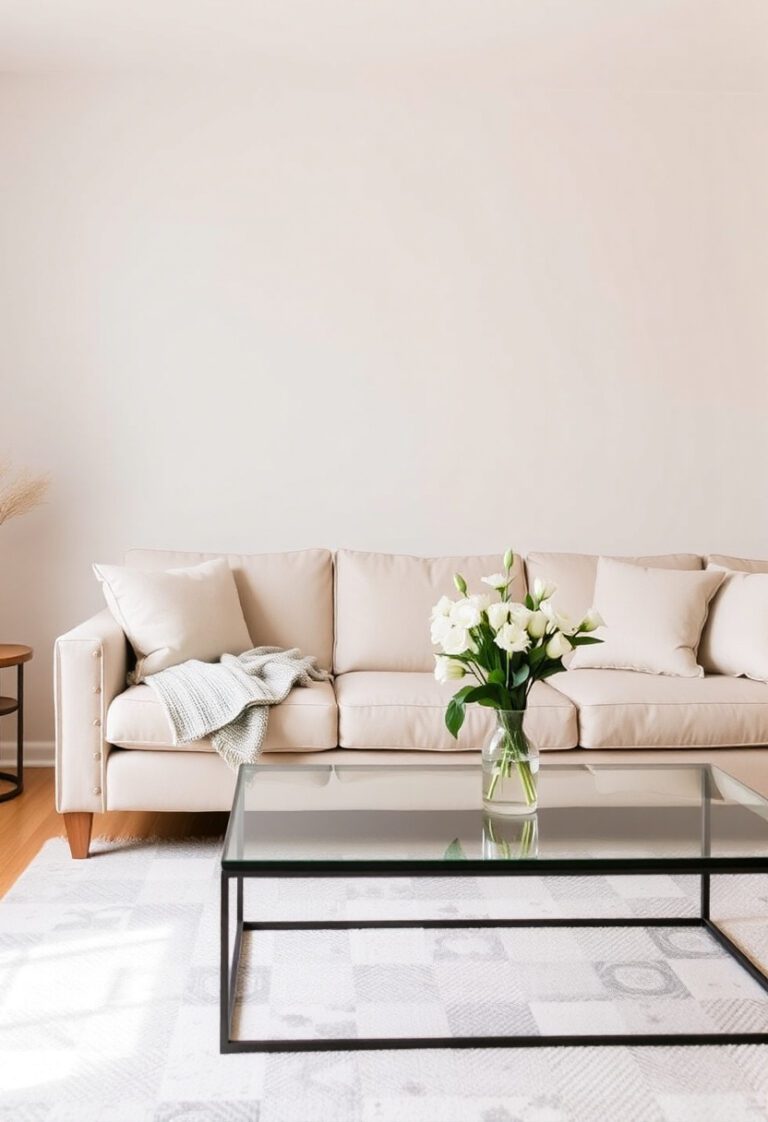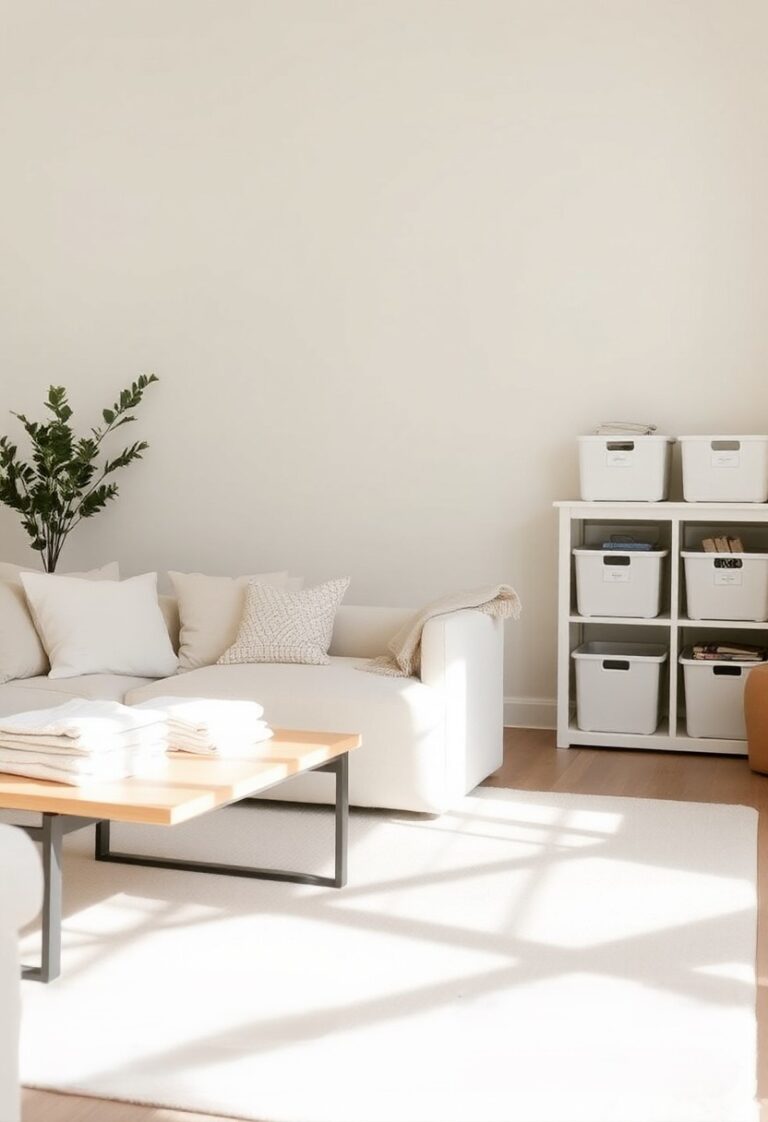Staring at your once-crisp white sheets that now look more like aged paper? You’re not alone — yellowing bedsheets are one of the most frustrating laundry problems that sneaks up on us. The good news is that you don’t need harsh bleach or expensive replacements to restore that fresh, hotel-white look.
This guide gives you 6 methods to get yellowing out of white bedsheets, plus prevention tips to keep them bright for years. Most solutions use items you already have at home.
1. Why White Bedsheets Turn Yellow (And It’s Not Just Age)

Before diving into solutions, let’s tackle the real culprits behind yellowing bedsheets. Understanding the cause helps you pick the right treatment.
Body oils and sweat are the biggest offenders. Even clean skin produces natural oils that build up over time, creating that dingy yellow tint. Deodorant, lotions, and hair products also transfer onto fabric during sleep.
Also Read: 7 Clever Ways to Use the Space Behind the Sofa
Detergent buildup is another sneaky cause. Using too much detergent or fabric softener can leave residue that attracts dirt and creates a yellowish film.
Hard water minerals like iron and calcium can also discolor white fabrics over time. If your tap water leaves spots on dishes, it’s likely affecting your laundry too.
The key insight? Most yellowing isn’t permanent staining — it’s buildup that can be removed with the right approach.
2. The Baking Soda Boost Method
This gentle yet effective method works for most yellowing issues and won’t damage delicate fabrics.
Mix 1/2 cup baking soda with your regular detergent in the washing machine before adding sheets. The alkaline nature of baking soda helps break down oils and neutralize odors.
For extra power, create a paste with baking soda and water. Rub this directly on yellowed areas and let sit for 30 minutes before washing normally.
Use warm water (not hot) to help activate the baking soda without setting any remaining stains. Hot water can actually make protein-based stains like sweat harder to remove.
Pro tip: Add 1/2 cup white vinegar to the rinse cycle for double cleaning power. The vinegar helps remove any soap residue that could attract future dirt.
Also Read: How to Get Musty Smells Out of Storage Bins
3. White Vinegar Power Wash
White vinegar is a natural fabric brightener that dissolves mineral deposits and soap buildup — two major causes of dingy sheets.
Add 1 cup white vinegar to the rinse cycle of your regular wash. The acid in vinegar breaks down alkaline buildup from detergents and hard water.
For heavily yellowed sheets, try a pre-soak treatment. Fill your bathtub or a large basin with cool water and add 2 cups white vinegar. Soak sheets for 2-4 hours, then wash as usual.
Don’t worry about the vinegar smell — it disappears completely during the rinse cycle, leaving sheets fresh and bright.
This method works especially well if you have hard water or have been using too much detergent. You’ll often see immediate results after just one treatment.
4. Lemon Juice Natural Brightening
Lemon juice acts as a natural bleaching agent without the harshness of chlorine bleach. The citric acid breaks down stains while adding a fresh scent.
Mix 1/2 cup fresh lemon juice with 1 gallon of hot water in a large container. Soak yellowed sheets for 1-2 hours before washing normally.
For spot treatment, apply lemon juice directly to yellowed areas and let sit in sunlight for 30 minutes. The combination of citric acid and UV rays creates powerful natural bleaching.
Line drying in sunlight after lemon treatment amplifies the brightening effect. Just avoid leaving sheets out too long, as excessive sun can weaken fibers over time.
Bonus benefit: Lemon juice also helps remove musty odors that sometimes accompany yellowing, especially in sheets stored for long periods.
Read More: How to Remove Musty Smell from a Bedroom
5. Hydrogen Peroxide Deep Clean

When yellowing is stubborn or widespread, hydrogen peroxide provides stronger cleaning power while remaining gentler than chlorine bleach.
Use 3% hydrogen peroxide (the standard drugstore concentration). Add 1 cup to your washing machine’s bleach dispenser, or mix with water for pre-soaking.
For targeted treatment, mix equal parts hydrogen peroxide and water in a spray bottle. Spray yellowed areas and let sit for 10 minutes before washing.
Test on a hidden area first, as hydrogen peroxide can lighten some dyes. However, it’s generally safe for pure white cotton and cotton blends.
This method excels at removing protein-based stains from sweat and body oils that other treatments might miss. You’ll often see bubbling action as it breaks down organic matter.
6. Oxygen Bleach Alternative Treatment
Oxygen bleach (sodium percarbonate) offers bleaching power without the fabric damage or harsh chemical smell of chlorine bleach.
Follow package instructions carefully — typically 1-2 tablespoons per load. Oxygen bleach works best in warm to hot water, so check your sheet care labels first.
This method requires longer contact time than chlorine bleach. Let sheets soak in the wash water for 30 minutes before starting the wash cycle for maximum effectiveness.
Oxygen bleach is color-safe and gentler on fibers, making it perfect for delicate white linens or sheets with decorative stitching.
Consider this your go-to method for maintaining brightness in expensive or delicate bedding that you want to keep looking new.
7. Prevention Tips to Keep Sheets White Longer
The best way to get yellowing out of white bedsheets is preventing it in the first place. These simple habits make a huge difference:
Shower before bed to remove excess oils, lotions, and products that transfer to sheets. Even a quick rinse helps significantly.
Use less detergent than you think you need. Most people use 2-3 times the recommended amount, leading to buildup. Start with half the suggested amount and adjust as needed.
Read More: How to Turn a Towel Rack Into a Visual Feature
Wash sheets weekly in warm water. Don’t let oils and sweat build up for weeks — fresh stains are much easier to remove than set-in yellowing.
Add 1/2 cup white vinegar to your rinse cycle monthly to prevent mineral and detergent buildup. Think of it as a maintenance treatment.
Store clean sheets properly in breathable cotton bags or linen closets with good air circulation. Plastic storage can trap moisture and cause yellowing.
FAQ
How often should I treat yellowing bedsheets? For prevention, use one of these methods monthly. For existing yellowing, you may need 2-3 treatments spaced a week apart to see full results.
Can I use these methods on colored sheets? Baking soda and vinegar are safe for colors. Test lemon juice and hydrogen peroxide on hidden areas first. Avoid these methods on dark colors, which can fade.
Why do my sheets turn yellow even when I wash them regularly? Usually it’s detergent buildup or hard water minerals. Try reducing your detergent amount and adding vinegar to the rinse cycle monthly.
Is it safe to mix these treatments? Never mix hydrogen peroxide with vinegar — it creates an unstable compound. Use one method at a time, and rinse thoroughly between different treatments.
How do I know if yellowing is permanent? Try the hydrogen peroxide method first — it’s most effective on stubborn stains. If you see no improvement after 2-3 treatments, the yellowing may be permanent fabric degradation.




